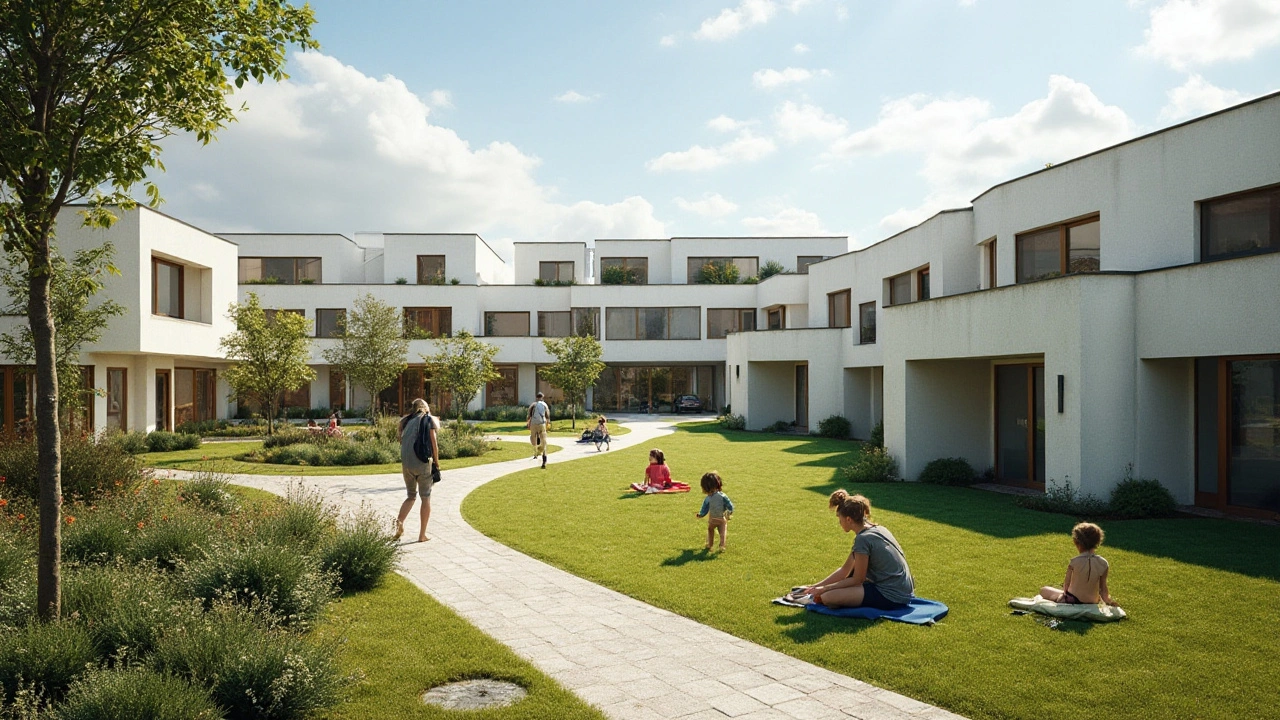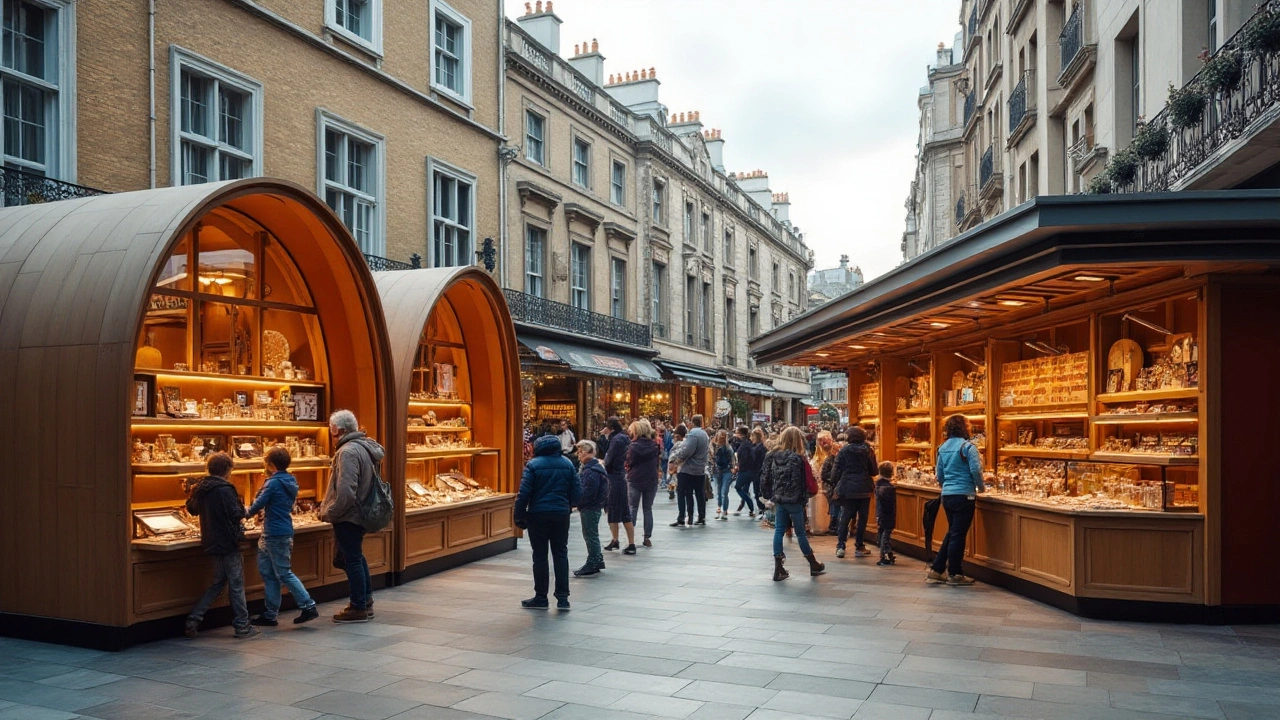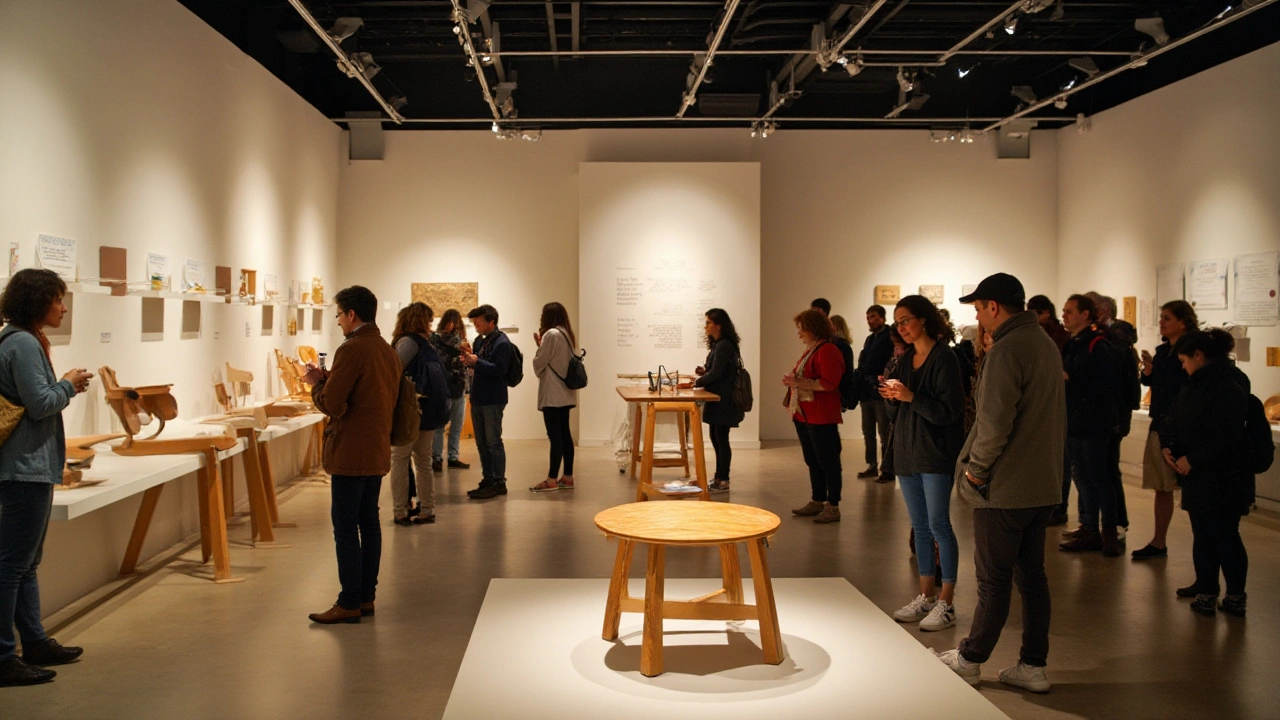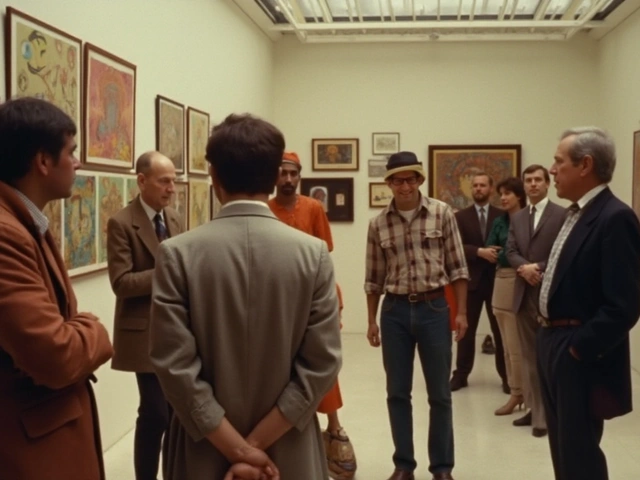Bauhaus isn't just a word; it's a defining movement that reshaped design and modern architecture. It all began in the early 20th century, during a time when the world was on the cusp of enormous change. Founded by Walter Gropius in 1919, the Bauhaus School challenged the traditional boundaries of art and industry by merging them into a new vision of design.
The Bauhaus philosophy revolved around the idea that function and form should go hand in hand, stripping away unnecessary ornamentation to focus on the pure essence of design. This revolutionary approach fostered an environment where innovation thrived, led by key figures who would become luminaries in their fields.
- Origins and Philosophy
- Notable Figures and Works
- Bauhaus' Global Influence
- Bauhaus Principles in Modern Architecture
Origins and Philosophy
The story of the Bauhaus begins in the post-war turbulence of 1919, Germany. Amidst the ruins of a defeated nation, a visionary architect named Walter Gropius had a radical idea: to create an art school that would unify all forms of art and craft under one roof. This was the birth of the Bauhaus, a place where architecture could stand alongside painting, sculpture, and design without the constraints of traditional hierarchies. The school opened its doors in Weimar, a city known for its cultural heritage, but it wasn't long before Bauhaus would carve its unique niche in international history. Gropius's idea was simple yet profound. He wanted to abolish the distinction between the artist and the craftsman. By doing so, he believed that students and teachers could forge a new kind of artist-craftsman who harnessed creative potential to meet the demands of modern industry. This ideal was encapsulated in the Bauhaus Manifesto, a short but powerful statement that called for the reuniting of art and technology, to breathe life into everyday objects and architecture.
The philosophy of the Bauhaus was not just theoretical; it had practical implications, as well. The concept of 'less is more' was a cornerstone of the movement. This meant stripping away superfluous decorative elements and focusing on functionality and simplicity. Such an approach was not just applied to architecture but permeated into every discipline within the school. The curriculum was meticulously designed to cover a wide range of techniques and skills, from local crafts to digital experimentation, forming a comprehensive approach to a holistic education in art and design. Paul Klee and Wassily Kandinsky, two of the most influential figures of the era, played pivotal roles in shaping the tutelage within its walls. Their teachings emphasized exploring the emotional and spiritual connections in artwork, a stance which resonated deeply with students.
"Architecture is the matrix of civilization," wrote Walter Gropius at the time, emphasizing the central role that architecture played as a cultural beacon.
Despite the excitement, the school faced substantial political challenges. Due in part to its progressive stance and modernist ideas, it was soon scrutinized by conservative critics who saw its avant-garde nature as a threat to traditional society. Such pressures forced the Bauhaus to relocate multiple times, moving to Dessau in 1925, and later to Berlin in the early 1930s. However, these displacements only fueled its reputation, allowing its principles to reach even wider audiences. As students and faculty members dispersed across continents due to escalating tensions, they carried with them the Bauhaus ethos to far-reaching corners of the globe. This inadvertent diaspora inadvertently helped to proliferate Bauhaus ideas, planting the seeds of modern architecture in nations worldwide.

Notable Figures and Works
The Bauhaus movement wouldn't have been as transformative without the visionaries who both led and were nurtured by it. Among the most prominent figures is Walter Gropius, the founder, whose innovative ideas and dedication to marrying functionality with beauty set the stage for what Bauhaus would achieve. Gropius, often remembered for his architectural masterpieces like the Fagus Factory and Bauhaus Dessau, believed in the power of interdisciplinary collaboration. His designs reflect a commitment to minimalism and utility, both hallmarks of Bauhaus philosophy.
Perhaps one of the most influential alumni was Ludwig Mies van der Rohe, his motto "less is more" still echoes across the corridors of modern design. With structures like the Barcelona Pavilion and the Seagram Building, Mies showcased an aesthetic that was stripped down to the essentials yet striking in its elegance. His teachings emphasized simplicity and clarity, principles that remain influential today. Meanwhile, the vibrant mind of Wassily Kandinsky brought abstract art into the fold of modern architecture. Through his teachings and art, Kandinsky encouraged students to perceive colors and forms as direct expressions of emotion and thought.
Paul Klee, with his whimsical and colorful works, contributed to the Bauhaus legacy through his exploration of form and color theory. Klee's pedagogical approach was as much about personal expression as it was about understanding the mechanics of art and design. His teachings inspired a generation to break boundaries and think beyond conventional constraints. Another significant figure was Marcel Breuer, known primarily for his work in furniture design. Breuer's Wassily Chair and Cesca Chair remain timeless pieces that embody the very essence of Bauhaus—where everyday objects resonate as both art and utility.
The work of these individuals and others created a ripple effect that extended far beyond the confines of the original Bauhaus establishment. They demonstrated that design and art could be both integrated and functional. Interestingly, a study by the Bauhaus Archive estimated that over 70% of modern architects today owe some aspects of their design ethos to Bauhaus influences, underscoring its profound impact. While the Bauhaus School itself faced closure under the Nazi regime, the dispersion of its members during this time spread their revolutionary ideas worldwide, embedding them into the very fabric of contemporary design.
"An idea can only become great when it has received attention and been developed by the whole community," remarked Gropius, encapsulating the democratic spirit of Bauhaus that continues to inspire initiatives in design education globally.

Bauhaus' Global Influence
The influence of Bauhaus on global architecture and design is nothing short of monumental. When the Nazis forced the closure of the Bauhaus School in 1933, its teachers and students scattered around the world, taking its revolutionary ideas with them. This unintended diaspora turned out to be a blessing in disguise for the modernist movement, allowing Bauhaus principles to inspire a new wave of creativity across different continents. The school's philosophy that design should integrate with functionality found fertile ground in varied cultures and settings, bridging the gap between artistry and manufacturing in unprecedented ways.
In the United States, the Bauhaus left its mark through the presence of figures like Ludwig Mies van der Rohe, who brought his minimalist yet iconic architectural style to the American landscape. His teachings at the Illinois Institute of Technology and his contributions to skyscraper design, particularly in Chicago, underscored a shift toward the sleek and functional architectural style that would define urban America. Similarly, Walter Gropius and Marcel Breuer significantly impacted architectural education at Harvard University, fostering an appreciation for simple, yet effective design solutions that emphasized utility without sacrificing aesthetic value.
"The ultimate aim of all visual arts is the complete building," declared Walter Gropius. This sentiment echoed globally, emphasizing how the Bauhaus ethos found a universal audience by speaking a language of simplicity and practicality.
Meanwhile, in Israel, the construction boom in Tel Aviv during the 1930s led to the creation of the 'White City,' a collection of over 4,000 Bauhaus-inspired buildings that now stand as a UNESCO World Heritage site. This adaptation of the Bauhaus style to local needs is a testament to its enduring flexibility and relevance. The crisp lines and uncluttered spaces provided practical solutions for the budding metropolis, marrying aesthetic elegance with the culturally specific needs of the region.
While the U.S. and Israel offer clear examples of Bauhaus's influence, the ripple effects extended far beyond these borders. In the Soviet Union, the movement inspired architects to explore unadorned geometric forms, giving rise to the constructivist architecture that characterized Stalin-era projects. Across Europe, Scandinavian designers adapted Bauhaus methodologies to embrace functionality married with simplicity, setting the stage for what we now recognize as Scandinavian design. Across continents, from the bustling streets of São Paulo to the creative hubs of Japan, the Bauhaus legacy endures, showing the timeless appeal of its core premise: well-designed spaces and objects can elevate everyday life.
Throughout its journey, the spread of Bauhaus principles emphasized a democratization of design, making it accessible and functional for the masses. Today, as we walk through cities laden with glass facades and geometric skyscrapers, we witness the profound footprints left by Bauhaus thinking, which continues to inspire new generations of architects and designers. These enduring impacts reveal that while Bauhaus may have begun as a school, its concepts evolved into a global movement with a permanent and evolving influence on the world of architecture and design.

Bauhaus Principles in Modern Architecture
The Bauhaus movement fundamentally reshaped the way we perceive modern architecture today. At the core of Bauhaus was a desire to bridge the gap between art and practicality, creating buildings that were as functional as they were beautiful. One of the key principles was simplicity. The idea was to eliminate unnecessary elements, allowing a structure's beauty and utility to shine through unencumbered. This approach promoted clean lines and open spaces, focusing on the interplay of form and function. Structures were meant to serve both the needs of their inhabitants and harmonize with their surroundings, leading to a balance between innovation and tradition.
Another guiding principle was the harmony between design and industrial production. Bauhaus architects often collaborated with engineers and craftsmen, ensuring that designs could be efficiently mass-produced without losing their artistic essence. This collaboration led to an iconic use of industrial materials, like steel and glass, which provided the durability and transparency architects craved. Many contemporary architects still draw inspiration from this approach, evident in today’s urban landscapes where glass facades and skeletal frames are common.
The influence of Bauhaus on current architectural practices is clear in trends like minimalism, which prizes simplicity and functionality. In the pursuit of creating efficient, practical spaces, many modern architects embrace elements of Bauhaus. The movement advocated for form following function, a credo that echoes through many contemporary designs, where aesthetic decisions are guided by practical considerations. In this way, architects today continue the Bauhaus tradition of creating spaces that are as thoughtful as they are image-conscious.
Yet, the Bauhaus influence goes beyond mere aesthetics. It shaped architectural theory, emphasizing human-centric designs that improve quality of life. This user-focused approach is mirrored in today's emphasis on sustainable and accessible design, where the needs of inhabitants and the environment are key considerations.
"Bauhaus gave us a blueprint for living," noted architecture critic Paul Goldberger, "and today, its principles are as relevant as they were a century ago, pushing us toward a future that’s both beautiful and practical."
Essentially, Bauhaus was revolutionary not just in visual style but in its forward-thinking philosophy that embraced change and progress. As we navigate the complexities of modern urban life, it's a testament to the enduring vision of Bauhaus that it continues to inspire new generations of designers and architects. This movement not only transformed the way we understand design but also encouraged a holistic view of the spaces we inhabit, merging aesthetic elegance with everyday utility, thus enriching the fabric of today's architecture.




